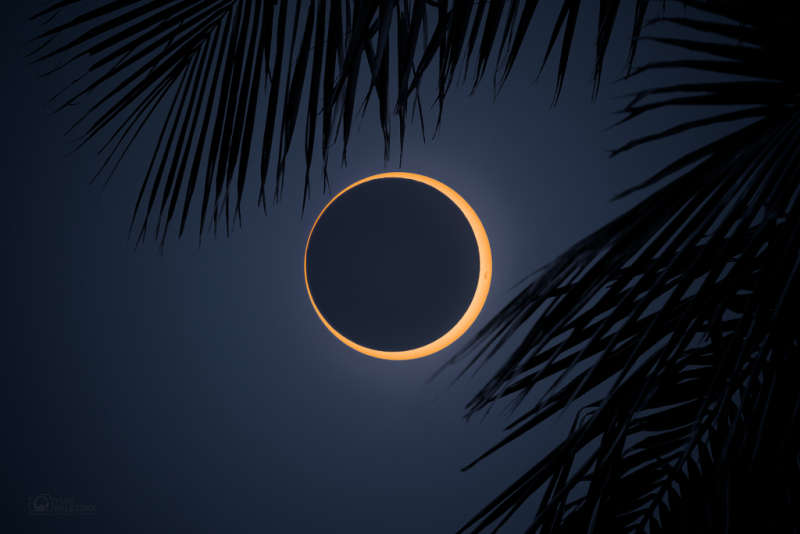
|
Explanation: The second solar eclipse of 2024 began in the Pacific. On October 2nd the Moon's shadow swept from west to east, with an annular eclipse visible along a narrow antumbral shadow path tracking mostly over ocean, making its only major landfall near the southern tip of South America, and then ending in the southern Atlantic. The dramatic total annular eclipse phase is known to some as a ring of fire. Also tracking across islands in the southern Pacific, the Moon's antumbral shadow grazed Easter Island allowing denizens to follow all phases of the annular eclipse. Framed by palm tree leaves this clear island view is a stack of two images, one taken with and one taken without a solar filter near the moment of the maximum annular phase. The New Moon's silhouette appears just off center, though still engulfed by the bright disk of the active Sun.
|
January February March April May June July August September October November December |
| ||||||||||||||||||||||||||||||||||||||||||||||||
NASA Web Site Statements, Warnings, and Disclaimers
NASA Official: Jay Norris. Specific rights apply.
A service of: LHEA at NASA / GSFC
& Michigan Tech. U.
Based on Astronomy Picture
Of the Day
Publications with keywords: annular solar eclipse
Publications with words: annular solar eclipse
See also:
- APOD: 2024 October 8 Á Annular Eclipse over Patagonia
- APOD: 2023 November 1 Á Annular Solar Eclipse over Utah
- A Sunrise at Sunset Point
- APOD: 2023 October 16 Á Eclipse Rings
- Ring of Fire over Monument Valley
- APOD: 2023 October 1 Á A Desert Eclipse
- APOD: 2023 September 24 Á A Ring of Fire Sunrise Solar Eclipse
